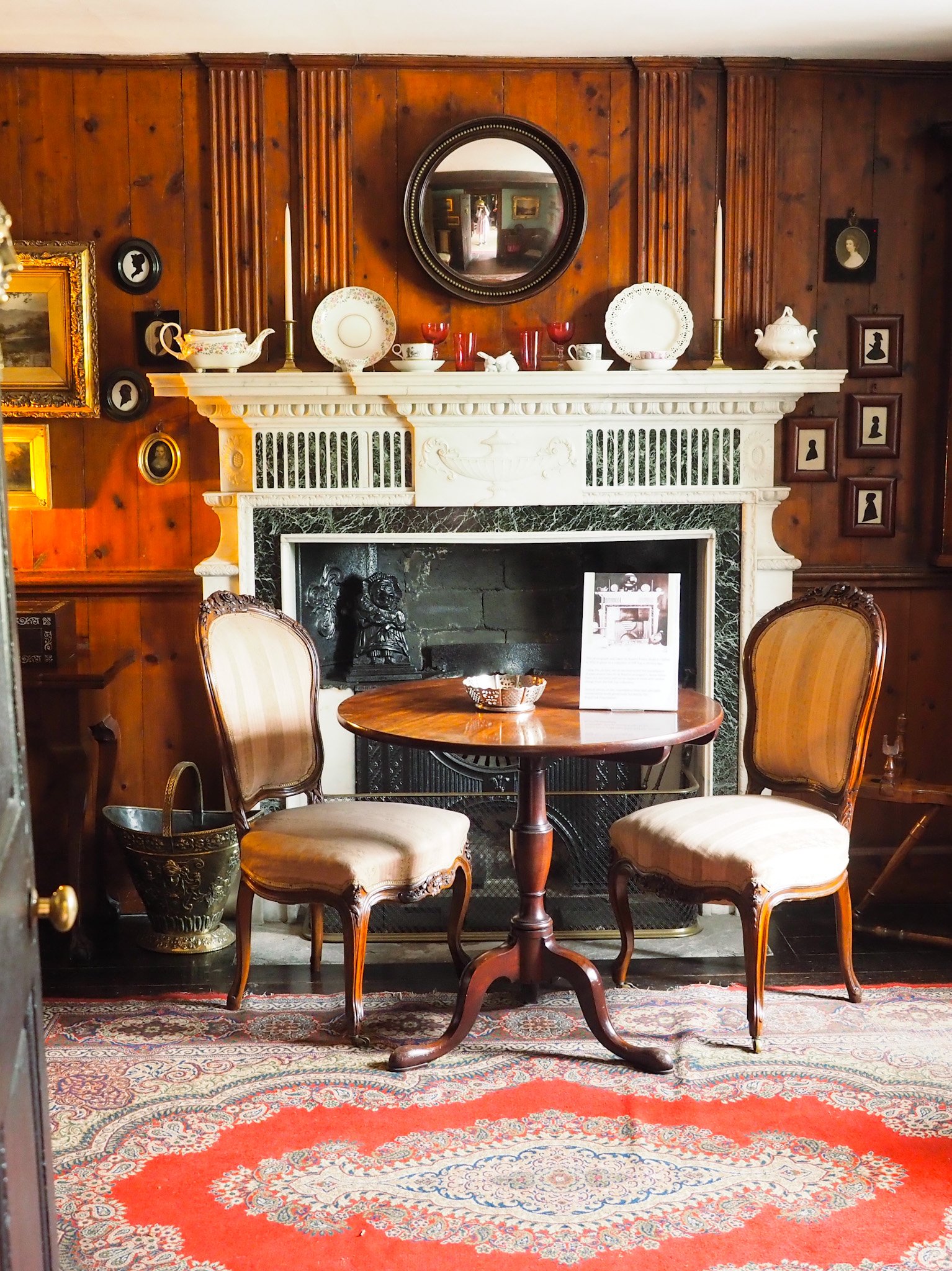Visiting Beatrix Potter's Hill Top Farm in the Lake District
One of my highlights of May was visiting Hill Top, the former home of Beatrix Potter. I had first visited Hill Top last September (see my vlog about the trip), but ever since had wanted to return in the springtime, when the wisteria climbing up the walls of the farmhouse would be in bloom, and the garden fresh and blossoming. If you’re planning a trip to Hill Top, then I recommend seeing it in May, when I feel it’s at its very best.
My Mum and I were lucky to have a brightly sunny spring day for our 2hr+ drive to the Lake District, and we chose a scenic route that took us through twisting country lanes, flanked by hawthorn hedges that were frothy with pink and white blossom. The dull thump of cricket bats echoed in the distance as we saw men in their cricketing whites playing on a village green, and small lambs dotted the fields on the horizon. It was a quintessentially English spring day, and, channeling Ratty and Mole, we were excited to be off on an adventure.
Hill Top Farm stands in the picturesque village Near Sawrey; you stroll past white-washed cottages with bright window boxes and the local pub, before turning in at the second gate on the right to enter Hill Top garden, approaching the house by a long narrow path bordered by flowers. In May, the roses were just beginning to open, and the azaleas and lilac looked spectacular.
To those who have read and reread Beatrix Potter’s books, in particular the tales of Jemima Puddle-Duck, Tom Kitten and Samuel Whiskers, the Hill Top Farm gardens and interiors look familiar. The black range in the hall, grandfather clock on the stairs and green painted gate in the vegetable garden are just as they were when Beatrix painted them into her stories, and the National Trust has done a brilliant job in keeping the spirit of Beatrix Potter alive within the house. It feels as though she could step in through the front porch at any moment, as a fire is kept burning in the grate and the steady, comforting tick of the grandfather clock is heard throughout the rooms.
‘I have got a pretty dresser and some old-fashioned chairs.’ ~ Beatrix Potter describing the firehouse (or hall, as she called it) in Hill Top.
Beatrix Potter bought Hill Top Farm in 1905, when she was thirty-nine and already a well-known children’s author and illustrator. Beatrix had previously spent a good deal of time in the Lake District, holidaying with her parents, and she was very much inspired by the landscape. Using the profits from her first illustrated books, she was able to purchase Hill Top and its surrounding land. The 17th Century farmhouse was bought only as a part-time home, and a wing of it was occupied by a tenant farmer who worked the land, but Beatrix used Hill Top to try out the many ideas she had about garden design, as well as interior decorating. Certainly, she was in need of distraction at this time, as she had only recently lost her fiance, Norman Warne, who had worked as an editor at Frederick Warne & Co, which had published The Tale of Peter Rabbit - the start of Beatrix’s great success - in 1902. Norman Warne was the third son of Frederick Warne, and he died suddenly of pernicious anemia, only a month after he and Beatrix got engaged.
Heartbroken, Beatrix threw herself into the planning of Hill Top. The gardens were designed in the cottage style, likely influenced by Gertrude Jekyll, with a vegetable garden (in which it is easy to imagine the ears of Peter Rabbit poking up amongst the pots!) and long cottage borders. Beatrix was influenced by the Arts & Crafts philosophy and aesthetic, and she used local, quality materials when possible as she built the garden’s paths and trellises. She also drew inspiration from the Arts & Craft movement for Hill Top’s interior, creating cosy interiors in the romantic country cottage style, and papering her bedroom walls with William Morris wallpaper.
Four years after purchasing Hill Top, Beatrix bought Castle Farm on the other side of Near Sawrey, taking advice from a firm of local solicitors, W. H. Heelis and Son. William Heelis, who acted on Beatrix’s behalf, became a close friend, and their relationship later blossomed into romance. They married in 1913, when Beatrix was 47. As Mrs Heelis, Beatrix lived at Castle Cottage with her husband, but she used Hill Top as her studio, stepping through the gate and making her way up to the house whenever she wanted to work. Hill Top, as the home she had so carefully curated, was greatly influential on her creative process, and she wrote many books during the Hill Top years.
In her book, A Fine Romance*, the writer and artist Susan Branch includes a wonderful description of her first visit to Hill Top Farm and describes it as Beatrix’s Potters ‘living art.’ I entirely agree: Beatrix planned and furnished Hill Top along her ideals of a model home. She decorated it with her own furniture and prized belongings and saw it as a creative oasis. Visiting Hill Top today, it’s wonderful to witness Beatrix Potter’s legacy: not only her stories and artwork, but also her home and gardens continue to inspire future generations of artists and writers.
Mum and I had a fabulous visit, taking our time as we explored the house and gardens. A wonderful atmosphere of peace hangs over Hill Top, despite the number of visitors, and I look forward to many return visits in the future.
*Affiliate links used for Blackwells.
















